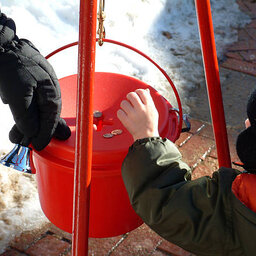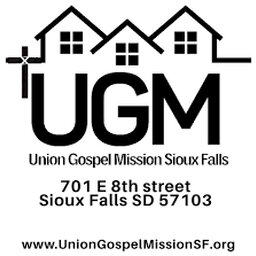Human Trafficking Male Survivor Jordan Masciangelo at Call to Freedom
Public Affairs Director Jon Michaels (since 1977) talks with Jordan Masciangelo, a male trafficking survivor and advocate, and Becky Rasmussen, CEO and President of Call to Freedom about their Hidden In Plain Sight program at the State Theatre.
from their website: calltofreedom.org
Who We Are
Sex and labor trafficking and commercial sexual exploitation occur at growing rates across the United States, including in the state of South Dakota. Several intersecting factors, including extreme poverty, geographic isolation, and homelessness, result in high levels of victimization across the state. Call to Freedom is a 501(c)(3) nonprofit based in South Dakota dedicated to bringing wholeness to all individuals impacted by sex and labor trafficking and commercial sexual exploitation.
Founded in 2016, Call to Freedom hired its first full-time staff member in 2018 and has grown to 26 full-time staff united by their passion for ensuring survivors of trafficking and exploitation are believed and supported by their community. Staff members bring decades of experience combatting violence and providing community-based services and include previous South Dakota Department of Corrections staff, social workers, law enforcement, and addiction recovery specialists.
The majority of our direct service staff had worked with Call to Freedom in their prior roles as community-based service providers and joined call to Freedom because of their passion for its holistic, person-centered approach. Our staff are uniquely positioned to serve trafficking survivors, given their experience working with people who have experienced trauma, responding to crisis situations, and identifying community resources available within the Sioux Falls community and across South Dakota.
Call To Freedom Statement of Faith:
We model Christ in our approach to restore wholeness to those impacted by sex and labor trafficking and commercial sexual exploitation.
Mission:
Call to Freedom brings wholeness to all individuals impacted by sex and labor trafficking and commercial sexual exploitation by navigating a healing path through our continuum of care model.
Vision:
Our vision is to create a comprehensive CommUnity model of care for individuals, and support communities while educating and advocating to combat sex and labor trafficking and commercial sexual exploitation.
Barriers that prevent identification
Individuals who are at risk of trafficking or who have experienced trafficking are often not recognized for various reasons. These barriers to identification fall into two categories: individual-related and provider-related.
Provider Related Barriers
- Lacks knowledge about human trafficking
- “Checks off boxes” without seeing the full situation
- Inadequate understanding of laws
- Fears violating HIPAA rules
- Lacks trauma-informed care training
- Does not believe it is their role to get involved
- Lacks access to neutral, professional interpreters
- Thinks that asking will be time-consuming or too complex
- Feels the individual is unresponsive or hostile to questioning
- Lacks information about referral options
- Attributes behavior(s) to harmful cultural stereotypes
- Has preconceived notions of how an individual who has experienced trafficking will behave or look
Individual Related Barriers
- Lacks awareness that what they are experiencing is trafficking
- Lacks understanding of victim and legal rights
- Lacks identification and other records
- Has a language barrier
- Fears deportation or law enforcement
- Fears that reporting could lead to being returned to an abusive home, jail, or foster care placement
- Feels complicit in an illegal act
- Fears that traffickers will cause harm to self, family, or loved ones
- Has limited literacy and education that hinders ability to communicate
- Has experienced trauma bonding with the trafficker or other victims
- Distrusts the provider or those in authority
- Feels hopeless and helpless
- Feels shame or guilt
For more information on the barriers that prevent identification, visit National Human Trafficking Training and Technical Assistance Center
Is it an indicator of trafficking?
A variety of flags can be indicators of trafficking. The examples listed are not definitive, and not every individual will present the same flags. Additionally, seeing one or two indicators doesn’t necessarily mean that something is happening to you, it simply lets you know that you should probably step back and take another look at the situation.
How to Protect Yourself
Online Exploitation
Requests for pics or videos that are private.
One sided conversations, like someone not sharing about themselves while you have been very open.
Someone threatening you or blackmailing you to do things – when someone does that with images or video of you, it’s called sextortion.
Labor Trafficking
Threats or abuse from employer
Unable to quit your job or go home
Withholding payment, not allowed to see or be in control of your paychecks or taking money out of your paycheck
Sex Trafficking
Asking you to keep secrets or telling you not to tell anyone what they did to you or what they had you do for them
Keeping you isolated away from your friends and family
Manipulating you with strings attached, like making you do sexual acts in return for something
Adapted from Love146
How to Advocate for OthersPhysical – notable changes in health or appearance
Untreated or undertreated workplace injuries
Physical impacts of long-term trauma including chronic illnesses
Shows signs of physical trauma such as bruises, black eyes, cigarette burns, or broken bones
Has repeated or concerning testing or treatment for pregnancies or STIs
Has health problems or complaints related to poor nutrition or irregular access to meals
Substance use impacts their health or interferes with their ability to function
Reports multiple sexual assaults perpetrated by non-family members
Relies on emergency or temporary resources to meet basic needs
Not allowed to sleep regularly or in a safe place
Behavioral – exhibits signs of trauma exposure
Youth runs away frequently or leaves their residence for extended periods of time (days, weeks)
Has unhealthy or inappropriate relationships including youth in a romantic relationship with an adult
Explicit photos are posted on the internet or stored on their phone
Meets with contacts they developed over the internet, including sex partners or significant others
Appears on edge, preoccupied with safety, or hypervigilant
Engages in self-destructive, aggressive, or risk-taking behaviors
Forced to give earned money to another person
Avoids interaction or gives misleading or vague information about their age, whereabouts, residence or relationships
Unaware of location, age or time
Environmental – situation or activities that attribute to risk of exploitation
Engages in sexual activities that cause harm or place them at risk of victimization
Youth experiences housing or caregiving instability
Youth with current or past involvement with law enforcement, juvenile justice, social services, or foster system
Relationship and belongings are not consistent with their age or circumstances
In possession of material items inconsistent with the their access to money including gifts, transportation and money
Someone else controls contact with family or friends, creating social isolation
Living with non-relative who is significantly older
Living at work or in extremely overcrowded locations
Accompanied by overly controlling adult who prevents them from speaking freely
A secret phone or apps providing additional number
Adapted from National Human Trafficking Training and Assistance Center and WestCoast’s Commercial Sexual Exploitation-Identification Tool
Vulnerable Populations
While anyone can be affected by trafficking, including both U.S. citizens and foreign nationals, there are some populations at a higher risk that you may encounter in your work. Factors that lead to a disproportionate risk of trafficking include: 1) history of abuse and neglect, 2) social disconnection, and 3) social stigma and exclusion.
By understanding how social determinants of health are connected to populations at the highest risk, you can better identify and respond to those affected by and at risk of trafficking. Examples of populations that may be more likely to experience these circumstances and be at greater risk of trafficking include:
 Jon Michaels' Forum
Jon Michaels' Forum


